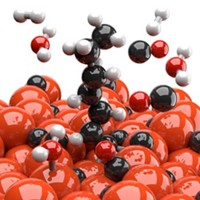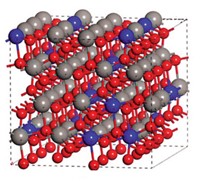Advertisement
Grab your lab coat. Let's get started
Welcome!
Welcome!
Create an account below to get 6 C&EN articles per month, receive newsletters and more - all free.
It seems this is your first time logging in online. Please enter the following information to continue.
As an ACS member you automatically get access to this site. All we need is few more details to create your reading experience.
Not you? Sign in with a different account.
Not you? Sign in with a different account.
ERROR 1
ERROR 1
ERROR 2
ERROR 2
ERROR 2
ERROR 2
ERROR 2
Password and Confirm password must match.
If you have an ACS member number, please enter it here so we can link this account to your membership. (optional)
ERROR 2
ACS values your privacy. By submitting your information, you are gaining access to C&EN and subscribing to our weekly newsletter. We use the information you provide to make your reading experience better, and we will never sell your data to third party members.
Synthesis
Grinding Out Reactions Boosts Catalytic Rate
Mechanical energy from ball milling enhances rate of carbon monoxide oxidation
by Mitch Jacoby
October 7, 2013
| A version of this story appeared in
Volume 91, Issue 40
Heterogeneous catalytic reactions, which involve solid catalysts and liquid or gaseous reagents, are nearly always driven by thermal energy—heat. A few solid-state reactions are driven by mechanical energy, as provided, for example, by grinding solid reagents in a ball mill. The enhancing effect of mechanical energy on solid-state reactions led Sarah Immohr, Ferdi Schüth, and coworkers at the Max Planck Institute for Coal Research, in Germany, to consider whether ball milling would accelerate heterogeneously catalyzed gas-phase reactions. For one reaction, they found that indeed it does. By comparing results obtained from a specially designed ball-mill reactor to those from a conventional reactor, the team found that the rate of CO oxidation by O2 in the presence of solid Cr2O3 catalyst is 1,000 times as high at room temperature and 10 times as high at 100 °C (Angew. Chem. Int. Ed. 2013, DOI: 10.1002/anie.201305992). Schüth and coworkers suggest that this finding, which they do not fully understand even after having conducted a series of control tests, could lead to new process options in the chemical industry.




Join the conversation
Contact the reporter
Submit a Letter to the Editor for publication
Engage with us on Twitter